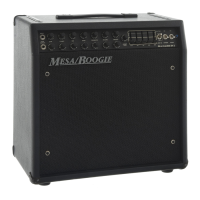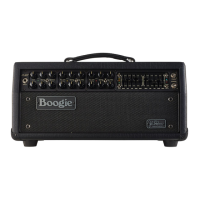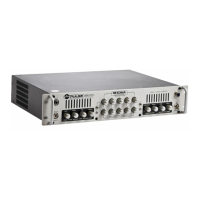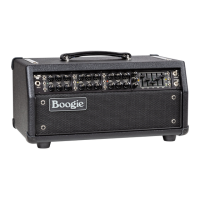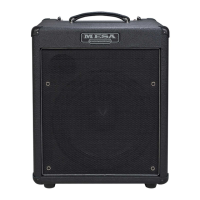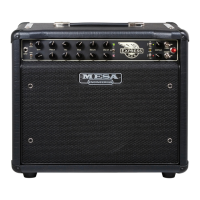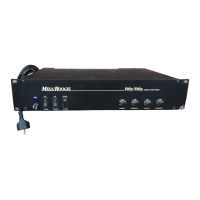- 5 -
PULL DEEP: This pull function is very self-explanatory. When pulled, the bass frequencies are
accentuated, creating a deeper, more robust bottom end. Although essentially a bass boost, much
like the Bass Shift, Pull Deep works on a different set of frequencies. This tends to "deepen" the
low end and give it that "extended" feeling as opposed to the "widening" effect of the Bass Shift.
Another crucial difference between the two is their placement in the signal path. Pull Deep is
located between the pre-amp and the effects return stage. In other words, near the end of the
signal path. The Bass Shift is very early in the signal path as its action takes place in the tone
controls. High amounts of bass dialed up early in the preamp are later amplified and can become
excessive in a high gain Lead Mode setting. Therefore, when extreme gain settings with a lot of
bottom are desired use Pull Deep instead of the Bass Shift. If still more bass is desired, try using
the 80 and 240 HZ EQ sliders as the EQ comes virtually last in the signal path. By juggling the two
bass shifts and the EQ, the Quad is capable of incomparable warmth and fatness.
MIDDLE CONTROL
RECOMMENDED SETTING: Channel 1: 5, pulled
Channel 2: 4, pulled
MASTER: This control serves two purposes and remains functional in both modes. It is a master
volume control for the Rhythm mode but is in series with the Lead Master. Therefore, at low setting
of the Master, Lead Master settings will be significantly higher to achieve equal volume levels
between the two modes. Likewise, high settings on the Master will require low settings on the
Lead Master to achieve a balance. This difference is only apparent at extreme settings. For normal
operation (switching between all modes at equal volume levels) the Master and Lead Master
Control settings will usually be very close. A very easy and convenient setting for the Master
Control is 5. This allows compensation in either direction for the Rhythm modes without adversely
affecting Lead Master settings. This setting also coincides with the second purpose of the Master
Control; this control also serves as an effects send level. A Master setting of “5” seems to provide
an adequate signal in the effects loop to drive the input of most effects. Most rack effects
incorporate input "Volume/Headroom" controls making this setting a good interface with most
effects. If you find this setting incompatible, adjust the Master Controls for the right effects send
signal and adjust the loudness level with the Output controls accordingly.
MASTER CONTROL
RECOMMENDED SETTING: Channel 1: 5
Channel 2: 4
LEAD DRIVE: This is another self-explanatory control. It is responsible for adjusting the gain,
sustain and sensitivity of the Lead Mode. Although it is responsive to the setting of Volume 1, its
range is so great that there is always enough drive available, regardless of how low the Volume
control is set. Anything from a “bluesy” low gain setting to an insane "metal" high gain sound, are
available with a twist of this powerful control. Touch sensitive!
LEAD DRIVE CONTROL
RECOMMENDED SETTING: Channel 1: Your Choice, 6
Channel 2: Your Choice, 4
LEAD MASTER: This control regulates the output level of the Lead mode in each channel. Much
like the Master, the Lead Master is also responsible for the amount of signal going to the effects
loop. Again, if a setting of 5 is inadequate to drive, or is overloading an effect, adjust the Lead
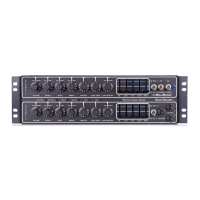
